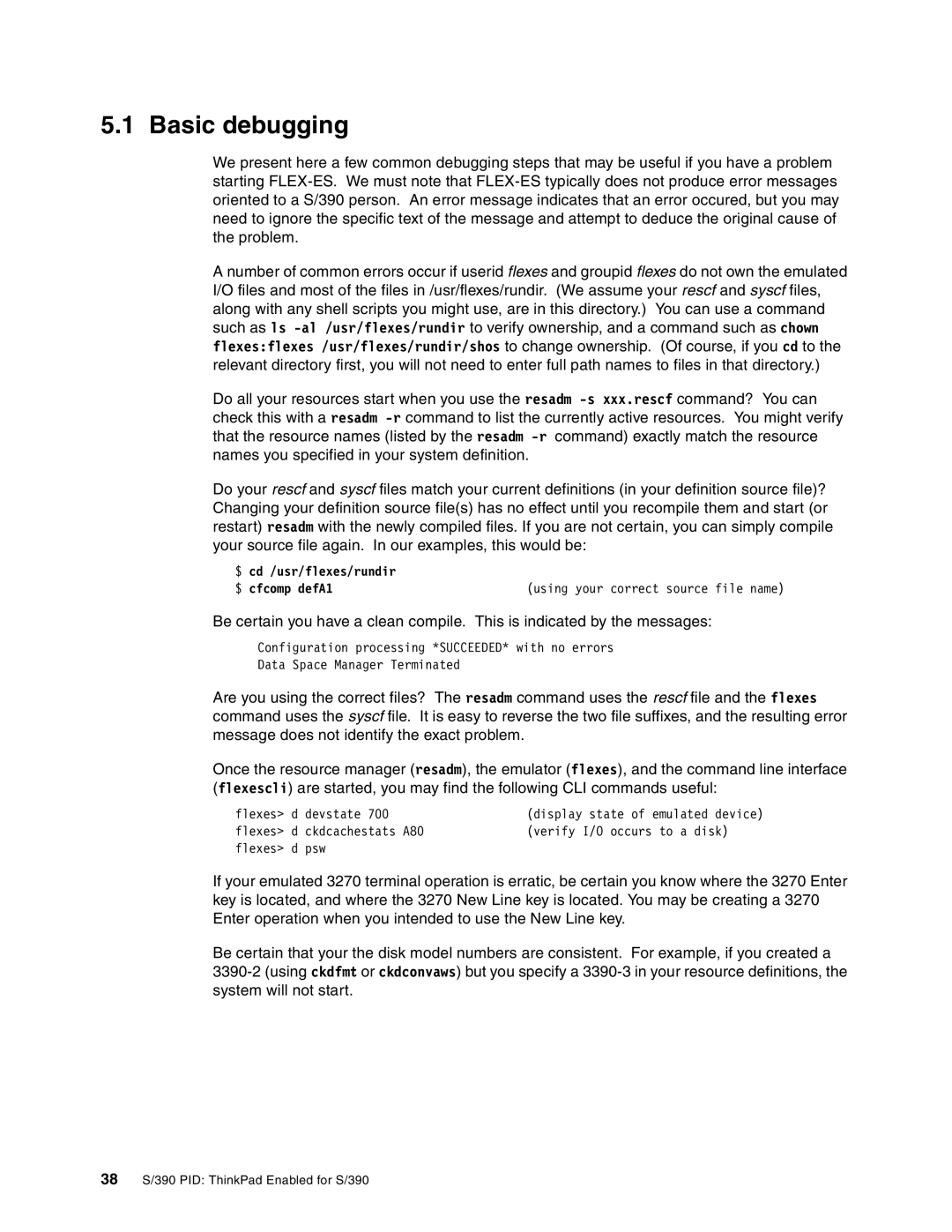5.1 Basic debugging
We present here a few common debugging steps that may be useful if you have a problem starting
A number of common errors occur if userid flexes and groupid flexes do not own the emulated I/O files and most of the files in /usr/flexes/rundir. (We assume your rescf and syscf files, along with any shell scripts you might use, are in this directory.) You can use a command such as ls
Do all your resources start when you use the resadm
Do your rescf and syscf files match your current definitions (in your definition source file)? Changing your definition source file(s) has no effect until you recompile them and start (or restart) resadm with the newly compiled files. If you are not certain, you can simply compile your source file again. In our examples, this would be:
$cd /usr/flexes/rundir
$ cfcomp defA1 | (using your correct source file name) |
Be certain you have a clean compile. This is indicated by the messages:
Configuration processing *SUCCEEDED* with no errors
Data Space Manager Terminated
Are you using the correct files? The resadm command uses the rescf file and the flexes command uses the syscf file. It is easy to reverse the two file suffixes, and the resulting error message does not identify the exact problem.
Once the resource manager (resadm), the emulator (flexes), and the command line interface (flexescli) are started, you may find the following CLI commands useful:
flexes> d devstate 700 | (display state of emulated device) | |
flexes> | d ckdcachestats A80 | (verify I/O occurs to a disk) |
flexes> | d psw |
|
If your emulated 3270 terminal operation is erratic, be certain you know where the 3270 Enter key is located, and where the 3270 New Line key is located. You may be creating a 3270 Enter operation when you intended to use the New Line key.
Be certain that your the disk model numbers are consistent. For example, if you created a
38S/390 PID: ThinkPad Enabled for S/390
